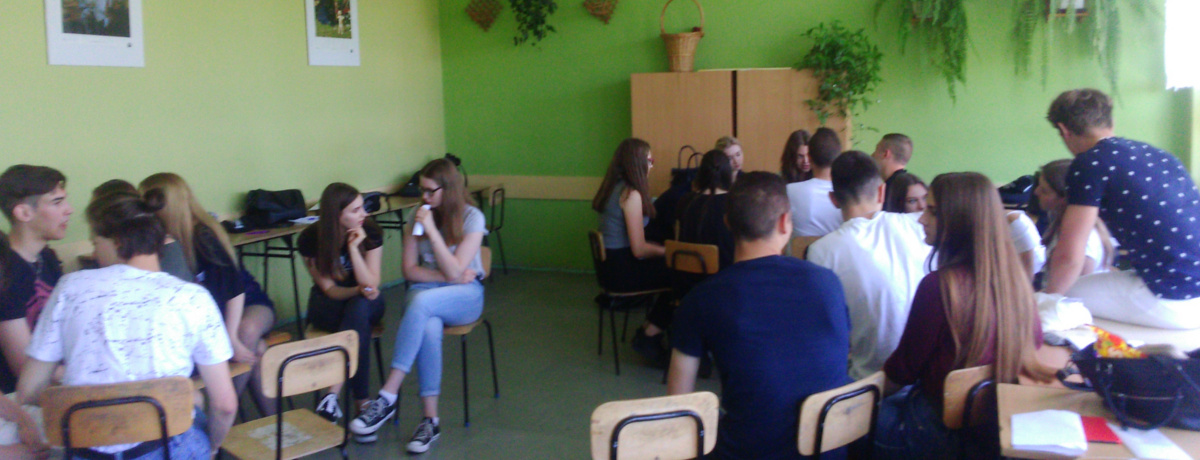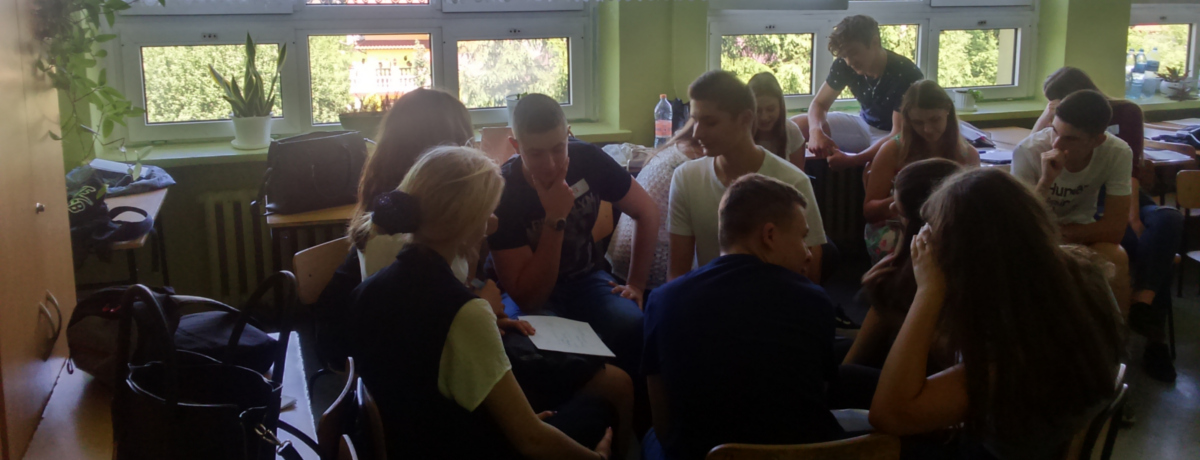| 2018 |
Sanok
Commission of National Education High School No. 1


| 2018 |
Sanok is sometimes described as a city of three minorities, as its Polish, Jewish and Ukrainian populations were all roughly the same size prior to World War II. Today only traces of this diversity remain to be seen: Klojz synagogue of Sadugura Hassidim, bet tefilla (house of prayer), and Protestant, Orthodox and Greek Orthodox churches. For centuries Sanok was an important frontier town, located at an intersection of various trade routes. The town did not survive the wars, conquests and Tartar raids unscathed. Kings and queens used to visit Sanok – a memento to this grand history is the town’s castle, now housing the Historical Museum boasting Europe’s largest collection of icons and an exhibition of works by most famous local resident, painter Zdzisław Beksiński. Located on a small hill along the banks of San river, Sanok is surrounded from the north by Słonne mountain range. Bieszczady Mountains are stone’s throw away.
First mentions of Jews in Sanok date as far back as the 14th century, when Poland was ruled by king Casimir the Great. However, it is unclear whether Jews lived in the town permanently or only on seasonal basis. It is only the craftworkers’ registers and tax registries from the 16th century that prove most certainly that Sanok had a Jewish population.
It is certain that by 17th century, a synagogue had been constructed in the town, with local Jews falling under jurisdiction of the Qahal in Lesko. In the 18th century, king August II The Strong granted Sanok’s Jews the privilege to settle in the town and conduct business within its jurisdiction. A mikveh and later a yeshiva were built.
Jewish life in Sanok flourished in the first half of the 20th century, a time when many cultural and social initiatives took shape. Local Jews represented various social strata and held diverse views. They also differed in their economic status: the poorest residents occupied small wooden huts packed tightly in the back alleys of the main square. Today, this area is a green plaza with a small city garden and a runners’ park surrounded by new development. Sanok also had wealthy Jewish residents who invested in oil or railroad, conducted business on an international level and for whom the town’s location at a crossroads was particularly appealing.

A number of impressive tenement houses that had once belonged to affluent Jewish residents still stand in Sanok’s center. Visitors to the local BWA gallery will see a sign left by a mezuzah in the doorframe of the exhibition hall. Talented writer and poet Kalman Segal documented the town’s early 20th century. It is through his works that local School Dialogue participants began their adventure with history of Jewish Sanok.
School of Dialogue workshops held at Sanok’s High School No.1 presented an opportunity to gain a deeper understanding of the Jewish community as well as to learn about Jewish culture and religion. Oliwia, one of the project participants proudly stated: “Not only did we learn about Jewish culture, religion and everyday life, but now we get to pass this knowledge on.” For their final project, high school students prepared an urban game that employed participants’ different senses to have them experience the bygone Jewish world. And so, students sang songs accompanied by a guitar, organized dances as well as a meal.
QR codes redirecting to a student-designed map from a website they themselves developed were employed to make use of modern technology; this way, game participants had the option to complete the route on their own. A final quiz checked what tour participants had learned in the process. School of Dialogue participants also prepared a miniguide to local Jewish sites with the local residents in mind. However, aside from the fun and pleasure of working together, Sanok’s high school students also had some bitter experiences – unfortunately, not all local residents proved to be open. Students encountered unpleasant situations that provoked group reflection.
School of Dialogue is not only an opportunity to learn about the past. “The workshops impacted how I think about my own identity. They made me aware of the situation of Jews during and after the war” said one participant. It can be said that we explore the past together to be here and now in a slightly different, more conscious way.

School: Commission of National Education (Komisja Edukacji Narodowej) High School No. 1
Students: 2nd and 3rd year
Teacher: Anna Cyganik
Educators: Ewelina Bartosik, Marcin Krotla
School of Dialogue program in Sanok was made possible by the support from AMTRA LTD.
Project cofinanced thanks to the generosity of Friends of the Forum, Conference on Jewish Material Claims Against Germany and individual donors and institutions from Poland and abroad supporting Forum for Dialogue.
In appreciation to the Conference on Jewish Material Claims Against Germany (Claims Conference) for supporting the School of Dialogue educational program. Through recovering the assets of the victims of the Holocaust, the Claims Conference enables organizations around the world to provide education about the Shoah and to preserve the memory of those who perished.